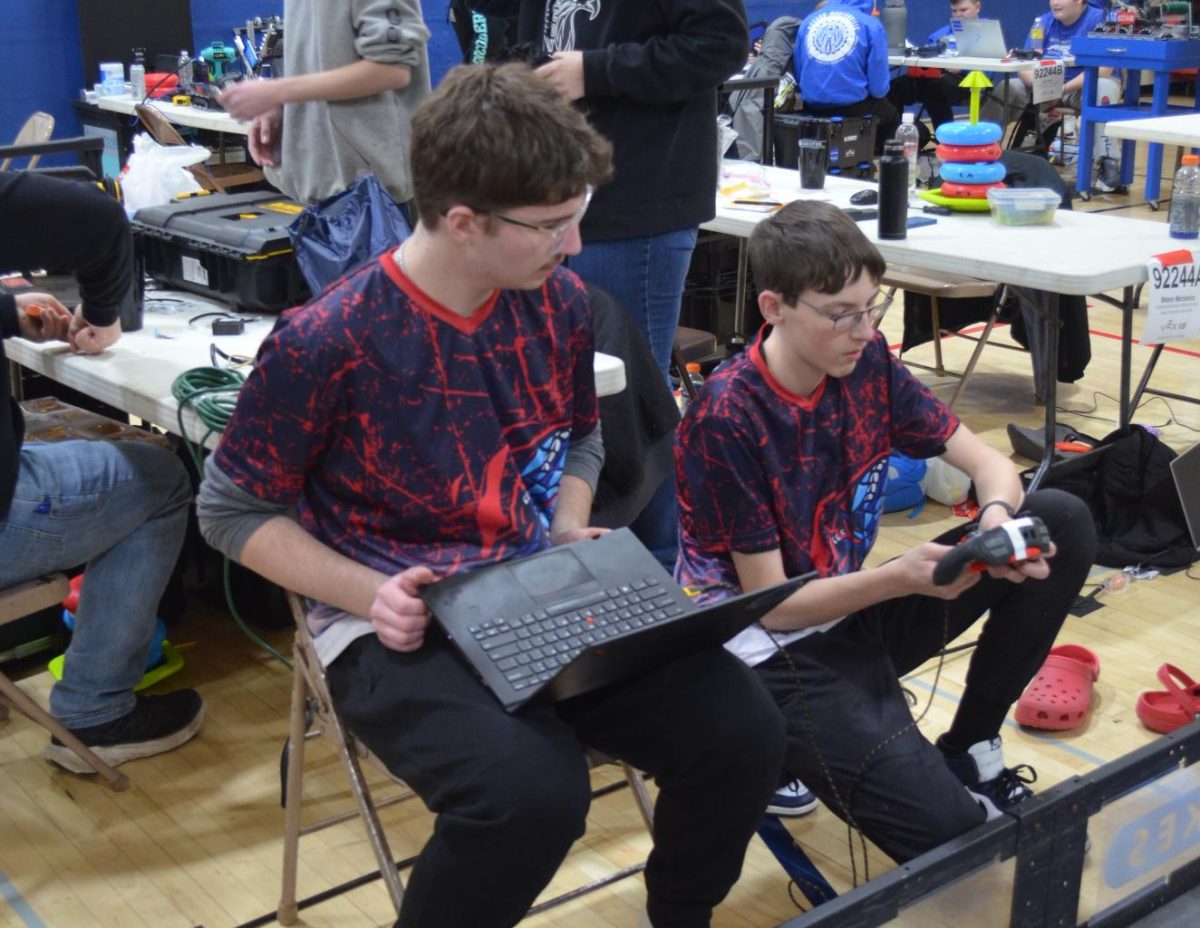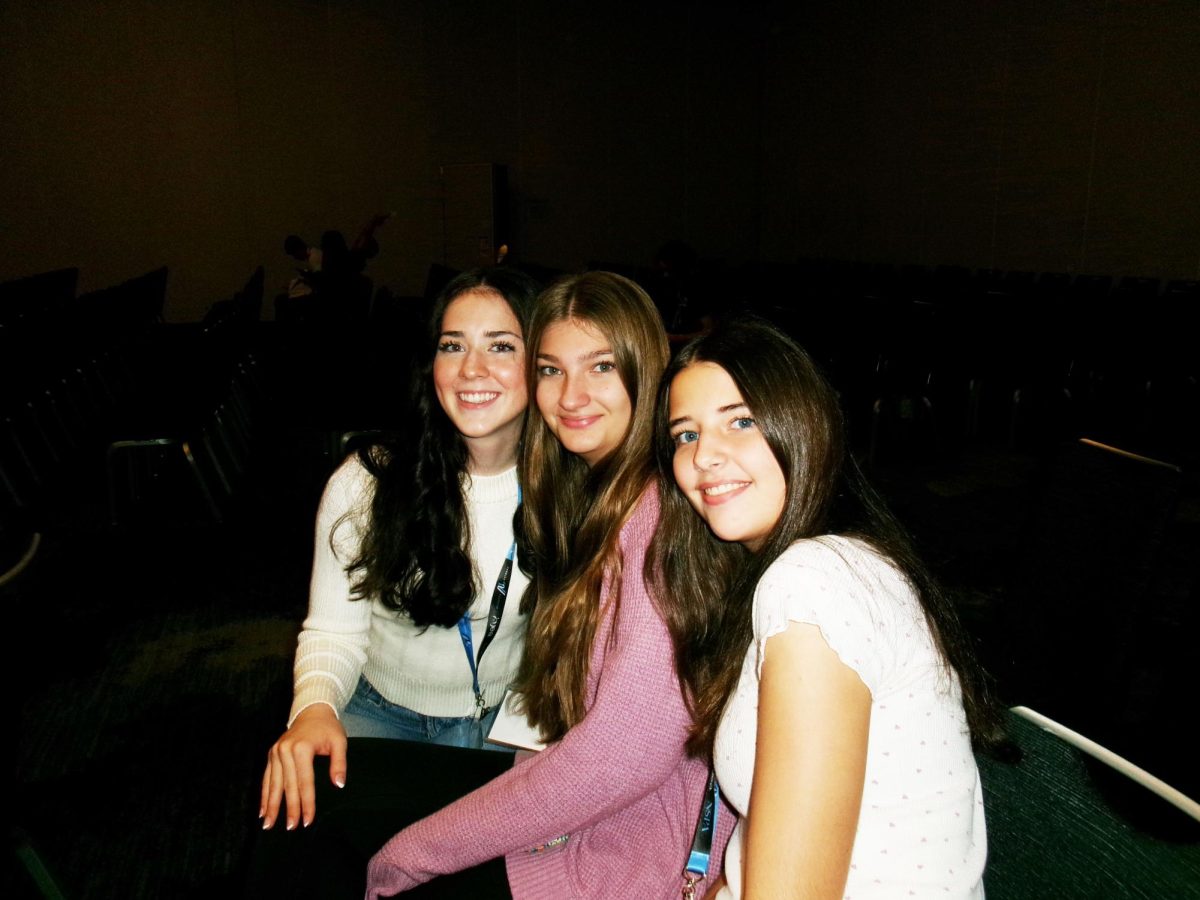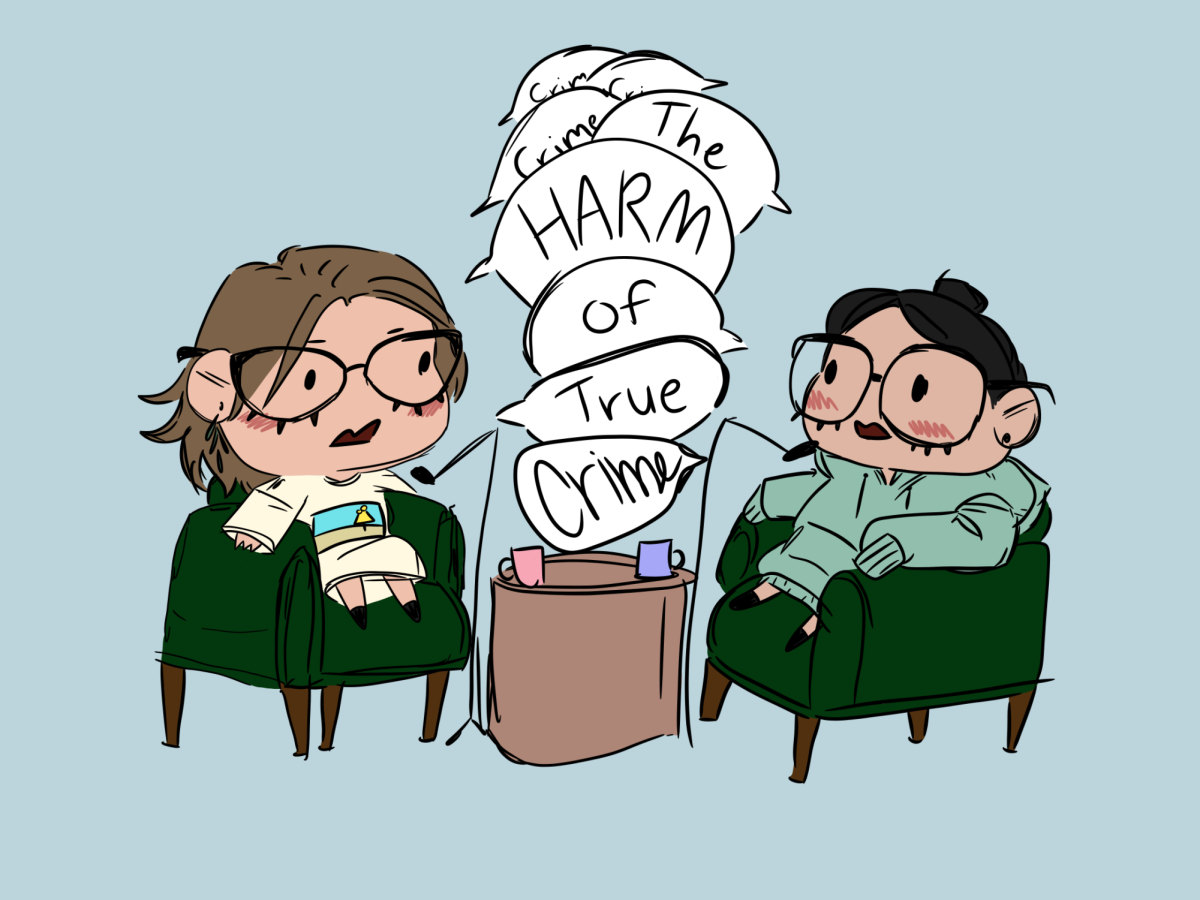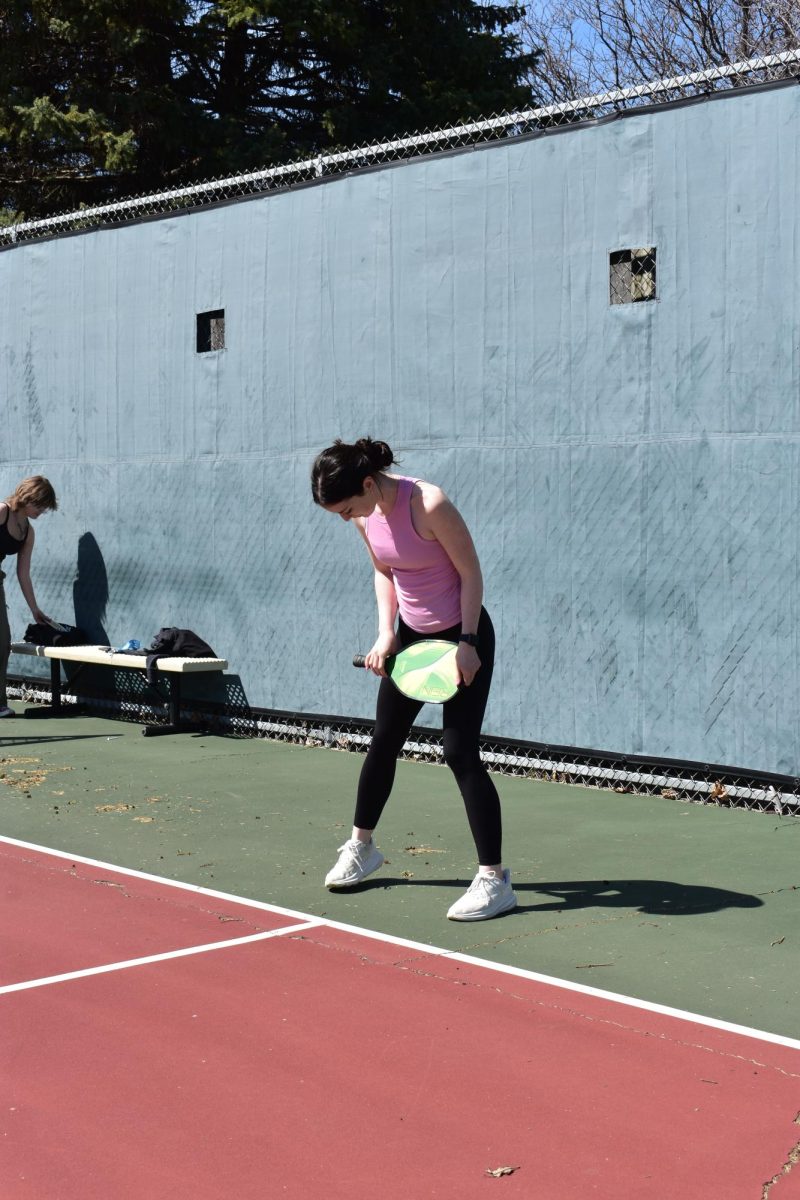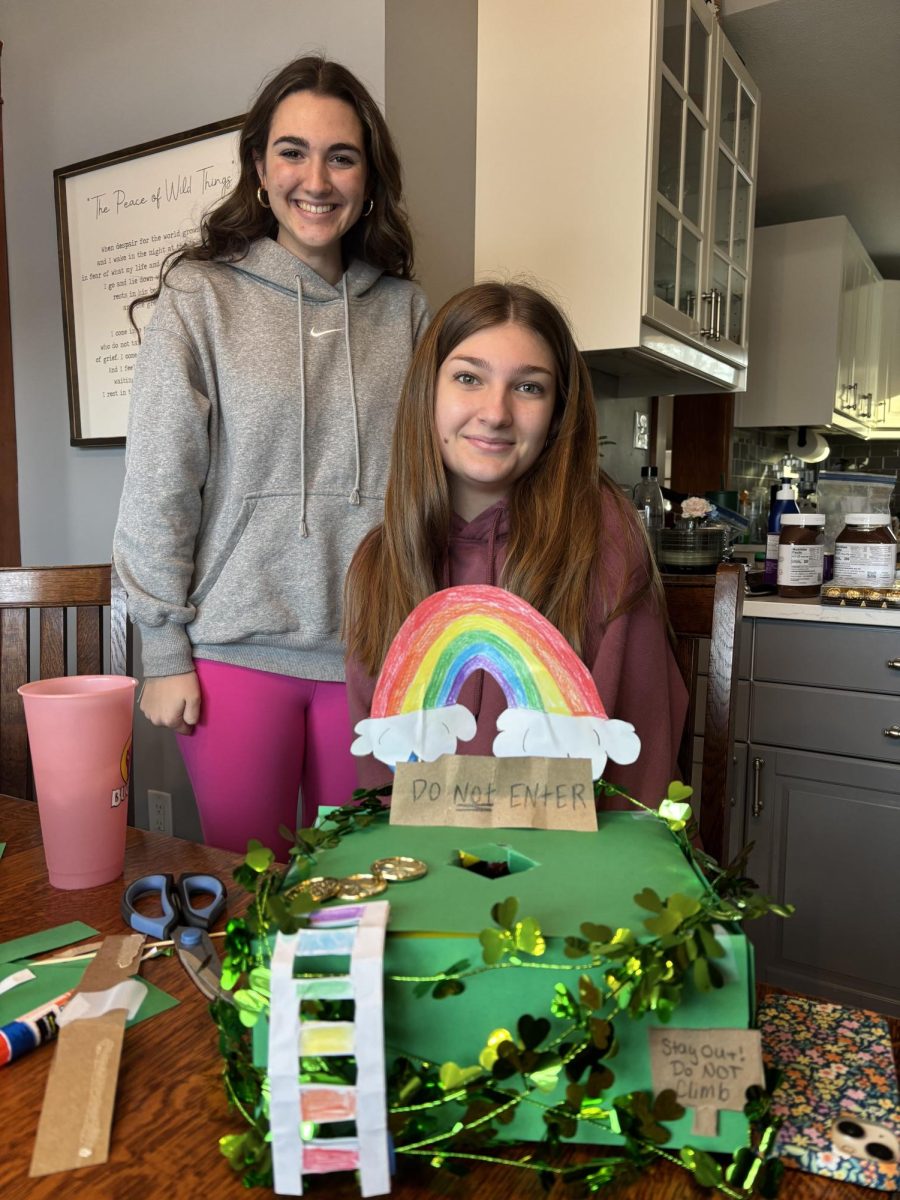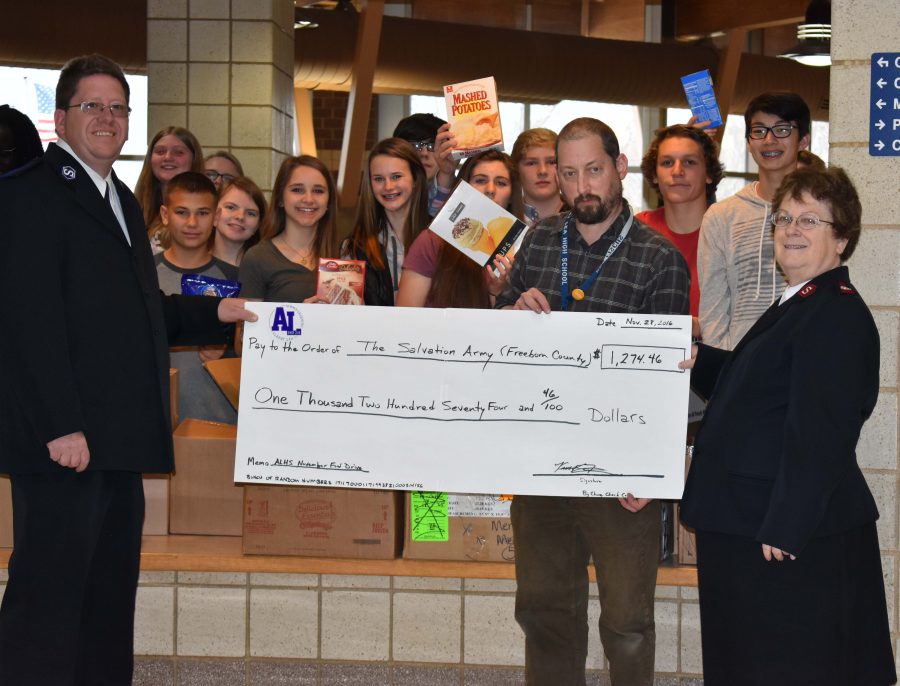The Differences We Make
Where all the Food that is Given Goes
Student Council members smile with the food collected as Fiscus gave a handmade check to the Salvation Army Workers.
Thousands of pounds of food, hundreds of dollars given and under it all staunch rivalries between classrooms are formed in this good natured dash to donate as much food as possible. With canned fruit and vegetable pyramids, boxed dinner towers and seas of rice bags and flour, flour and more flour make up the core of what most students donate to the food drive at Albert Lea High School Teacher Ken Fiscus has been involved with the food drives surrounding the Albert Lea school district for roughly 26 years, six at the middle school and 20 years at the High School.
“There’s a lot of people who need it,” Fiscus said as to why he is involved.
“I feel people need to break out of their selfish behaviors and think about others.”
For no less than 35 years there has been a food drive at ALHS, each year raising hundreds to thousands of pounds of food. Students bring in piles of cans, boxes and bags in hopes of winning a prize for their efforts. According to Fiscus, prizes,especially edible ones are a brilliant way to motivate motivate students into bringing in more food, that and the rivalries that arise between competitive classrooms.
“If you make it (collecting food) into a competition then more gets done,” Fiscus explained.
After collecting approximately 3,341 pounds of food last year, this year has blown that amount out of the water. This year’s new emphasis on collecting money as well as food, the high school alone raised $1275 and, combined with the food, came to a total donation of 14,049.6 pounds of food.
Which begs the question. what becomes of all those canned yams and bags of flour that’s donated to the drive?
When food is donated volunteers from the food drive take the food and are sorted into boxes weighing between 28-30 pounds. People who need the food can come into the Salvation Army and receive two boxes.
One already premade containing stable foods that is the equivalence of between 4-5 meals and another which is filled with meat and fresh produce.
Each day 15 to 30 boxes are given out to people in need and up to 45 boxes per day. On a regular day the total amount of food given out can reach 900 pounds. The food goes to many different places and helps all kinds of different people. Even people at ALHS.
“There’s a lot of people who need and there are people in the building that we’re helping,” Fiscus said. “We’re feeding our classmates, they don’t let us know that and that’s okay.”
The need is constant in the community. A feeding site is held for people in need is open from 11:30 to 12:30 a.m., Monday through Friday at the Salvation Army’s location at 402 Court St. Albert Lea.
“People are hungry,” said Major Elsie Cline who has been apart of helping within the Salvation Army for 34 years. “There are a lot of homeless people in Albert Lea.”
Everything that is given counts, even the five tons of flour some kid brought in. Both money and food are considered to be equally valuable, by having both the ability to buy items and already having the food.
“We get things at a reduced rate,” Cline explained. “For the cost of one item we can get between three and four.”
The effect that the High School has on people in the community is more than just giving away food to a good cause. It’s putting food in someone’s stomach, that food could be feeding the person next to you, that food gives more than just eating. The Salvation Army is grateful for such generosity from students and staff alike.
“ “We are very very appreciative, this will come in very usefull,” Cline said. “Thank you, thank you, thank you.”
As to what students can learn from the food drive, Fiscus said.
“It’s part of growing up, when you’re younger you think the world revolves around you but as you get old you realize other people matter more. Hopefully that’s what they’ll learn.”



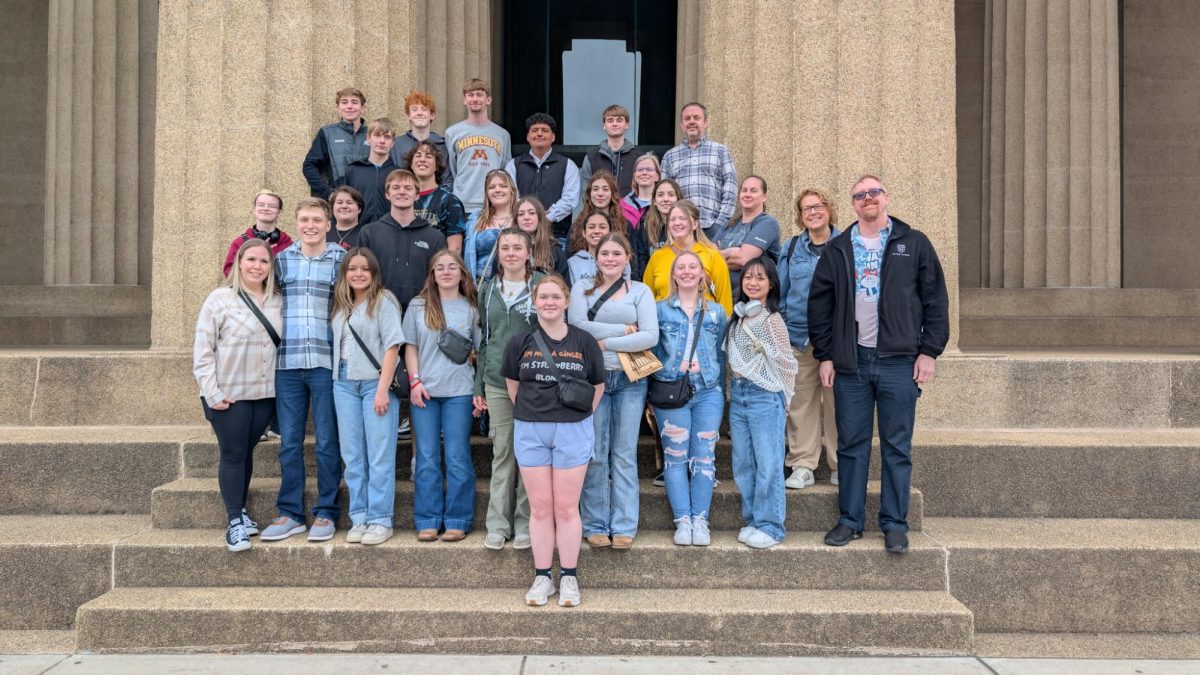

![At the pepfest on Feb. 13 the Winterfest Royalty nominees were introduced. There were two girls and two boys candidates from each grade. Royalty included Prince Axel Calderon (11), Jacob Miller (12), Princess Maya Fuller (11), Brecken Wacholz (10), Ethan Brownlee (9), Lord Given Saw (9), Lilly Elmer (9), Angela Buansombat (10), Queen Jenna Balfe (12), Hanna Austinson (11), Raegan Broskoff (8), Duchess Evalyn Holcomb (10), Jordyn Earl (8), and Lady Leighton Brenegan (9). Not pictured include: King Kaiden Baldwin-Rutherford (12), Piper Aanes (12), Blair Blake (11), Duke Kuol Duol (10), Thoo Kah (8) and Aidric Calderon (8). Student council member and Junior Prince Axel Calderon said, “It [the nomination] means that I’m kind of a student leader. I hopefully show younger kids what it means to be a part of the student council and lead the school.”](https://www.ahlahasa.com/wp-content/uploads/2025/03/front-page-1200x800.jpeg)





